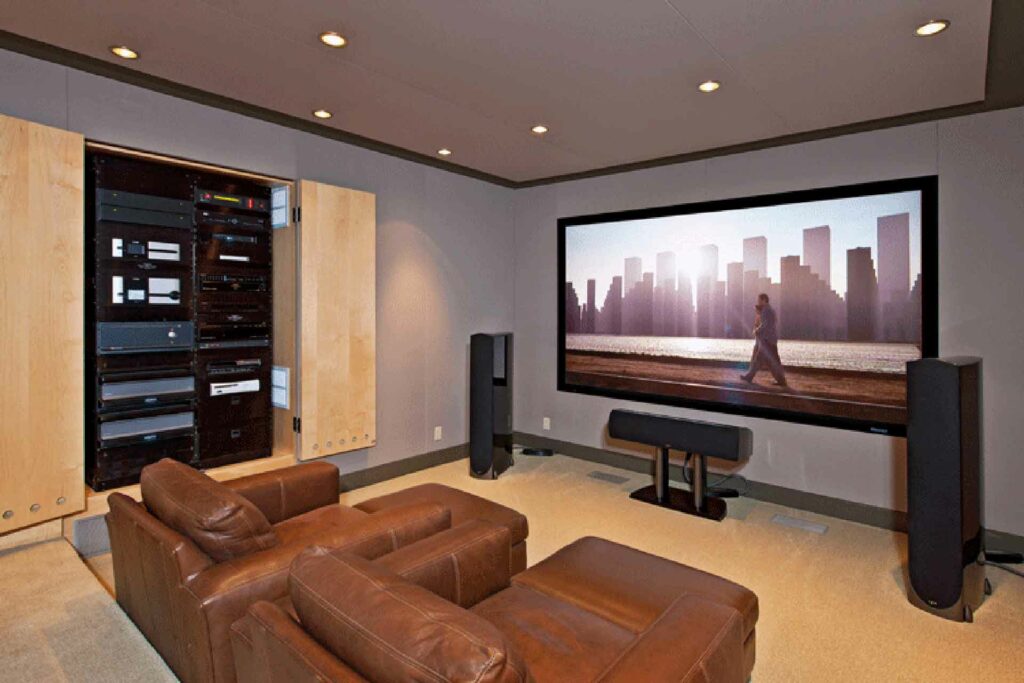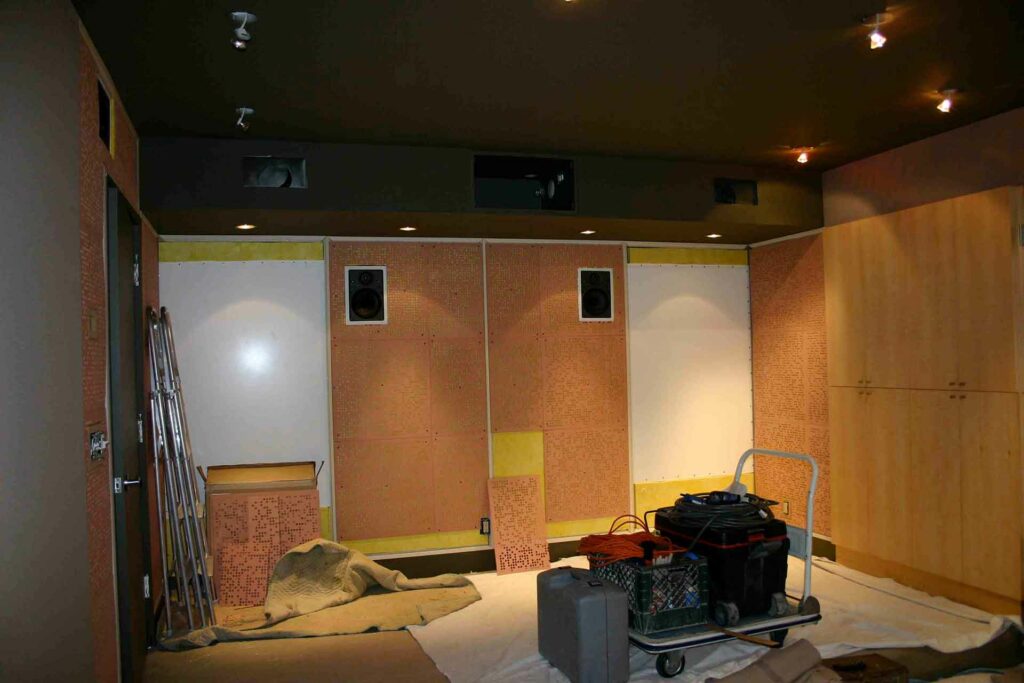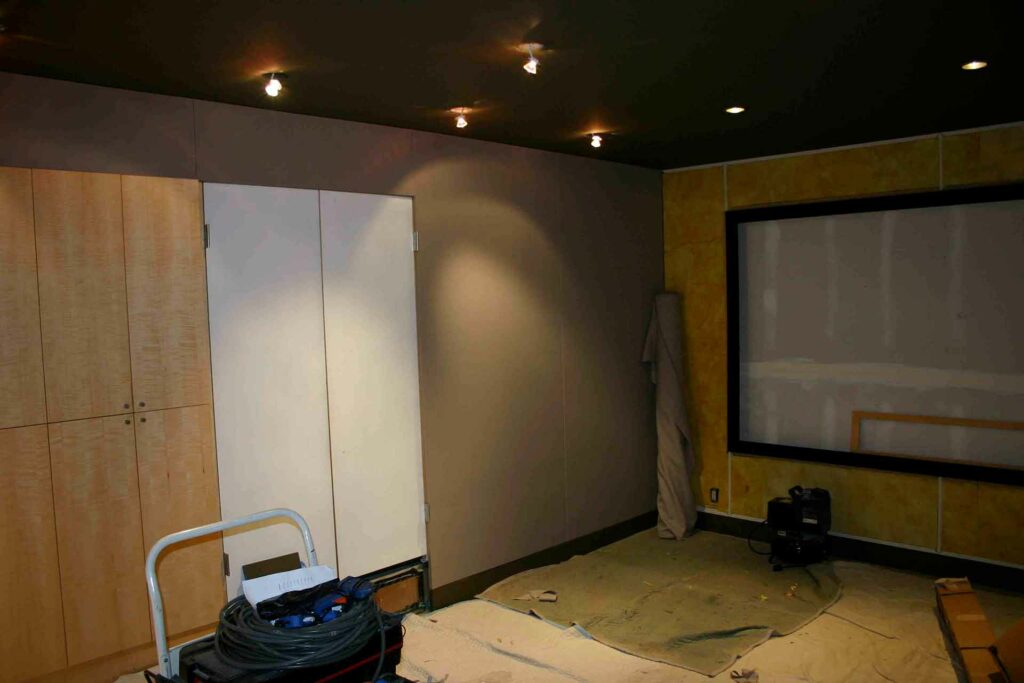Last week, I was talking to the guys at Linn about getting Paul Wilson one of their legendary LP-12 audiophile turntables for review, which looks to be about two weeks away from arriving at Paul’s home. Linn’s audiophile philosophy pretty much defines the East Coast or U.K. thoughts on the hobby, as it states that your stereo system is only as good as the source component that it is playing. I fully understand their point, but I respectfully disagree with that theory. West Coast audiophile theory suggests that you might invest more money into speakers at the start of an audiophile journey, which is how I did things in my early career at a number of notable audiophile dealers here in California.
Today, I would like to present an alternative theory that is more relevant to good sound and audiophile happiness than either the East Coast or West Coast historical models.

Your listening room is far and away the most important component in your audio system. Period.
Savvy audiophiles ignore what the elders have suggested in the print magazines for decades, which is that if you keep pouring more and more money into your audiophile system, you’ll get more and better performance results. Yes, investment in better gear will help, but you can’t solve an acoustical problem like an overly reflective room with components alone. Today’s digital room correction is getting better and better, but anybody that sells said room correction components will tell you the more acoustical problems that you can solve in the physical domain, the better of you will be before you plunk down the measurement mic and get started with digital room correction.

How Do You Start Improving Your Audiophile Listening Room?
There are so many places that you can look to for audiophile improvements with some being bigger performers than others. Some upgrades are more expensive and invasive, not to mention messier, than others. You will have to weigh if you are willing to deal with drywall dust, new flooring, electrical work, and so on or are you just trying to work with what you have now. People who rent simply aren’t going to tear up a condo or home to improve the acoustical performance of the room unless they have an option to buy said property.
- Treat your first reflections, first – The areas above two or three feet above, behind, and to the side of your favorite speakers reflect sound that can really mess up your sound. If you can put some form of absorptive treatment, be it drapes, a fabric wall or some form of pre-made acoustical absorption panel, you are on your way to a huge audiophile improvement for not very much money spent. While I encourage having a TV on the wall between your speakers in a modern audiophile system, perhaps you can have something made out of soft and absorptive material that covers the monitor when you are doing serious listening sessions. Could you put panels about two to three feet in front of the speakers on the side wall? Could you repeat the same thing on the ceiling? Again, expect big audio returns from this three-figure, likely DIY project. Removing a coffee table or an ottoman in that same area in front of your speakers will also help your reflections and just having them out of the way of your speakers can help your acoustics, and that only costs a little manual labor.
- Trap your bass – Low frequencies have long sonic waves and those long waves tend to physically load up in the corners of your room, causing a muddy low-end when playing your system. The way that I like to treat standing waves is to use products like RPG’s Modex Plates, which are installed into the stud bays of your walls when the drywall is ripped off (or not yet installed). That level of a project is pure insanity for renters, as we understand. There are many other products on the market that solve the same problem. One such solution is ASC Tube Traps, which are tall, cylindrical towers that are not the prettiest items that we’ve ever seen, but they do the job nicely in terms of acoustics. Ultimately, you might put one or two in each corner of your room. They are offered in various fabric coverings, but they are pretty big, especially when they arrive from the UPS guy in their boxed glory. Make sure your significant other is out for that delivery. The difference that you can make in your bass with this type of upgrade isn’t subtle at all. Subwoofers have good room EQ these days, and that only makes your performance better (and easier to accomplish) but starting with a room that is ready to rock in the bass also helps the rest of the sound higher up in the frequency range to perform better too.
- Diffusion is the next level of audio excellence – As a card-carrying audiophile, we assume that you’ve seen those cityscape 4×4 foot panels that studios use for diffusion. They take rogue audio waves and keep them from interfering with your listening experience in the milliseconds that it takes sound to get from your speakers to your ears and then shoot all over your listening room. Cityscape diffusors aren’t too expensive until you get into wood ones with custom finishes, but they can look really cool. There are other ways to get some diffusion, though. An exposed brick wall can accomplish your goal. A bookcase loaded with CDs, LPs, and/or actual books will do it too. Having some diffusion on the back wall of your listening room is often a solid upgrade.
- Don’t forget your flooring – You don’t want to over dampen your room or it can sound a little dead overall. That’s why some advanced audiophiles and many studio designers start with a hard flooring surface like a cement floor (floated, meaning not connected to the side walls) and then put other materials like some hardwood and then softer materials like carpet more in the listening position. In a pinch and again good for the renter, just adding a big, cushy carpet on top of your flooring in the area in front of your speakers can make a nice difference without breaking the bank at all.
- Audiophile electrical upgrades are worth every penny – Hiring an electrician to go over your room is an excellent idea. There is a lot of talk of hum and noise in a system. Often that comes from your AC power. Having your electronics on their own 20-amp circuit is a low-cost and great upgrade. Do the same for your amplifiers as they can draw very heavily from your circuit and if they have their own, they will never be sucking wind in terms of drawing enough power from your breaker box. Have the electrician replace all of your outlets or at a minimum double check that the original contractors didn’t leave you with half-assed, poorly wired outlets. These simple repairs can really improve your hum issues, thus fix noise that is way more meaningful than found when, say, comparing audiophile preamps.
- See the light when it comes to modern lighting design – Having the ability to control your lights and make your listening room be dark, moody, or as bright as you like is easier and more cost effective than ever. Home Depot and Lowes have wireless LED lights that are controllable from your phone or tablet and can be installed by you. Fancier LED lighting solutions allow for you even more control, more color temperature options, and better ability to dim. Overall, having great lighting control is a luxury that will allow you to enjoy your system more. Beyond that, older lighting fixtures can also be noisy, giving you unneeded background noise to compete with your kick-ass audio system. A $50 to $100 Lutron lighting controller can be the start to an interesting new world of upgrades in lighting control that adds to the fun of the hobby. Renters might even pop for this level of control, where homeowners might look to even slicker ways to control their lights via remotes, keypads, phones/tablets, and voice commands. While this used to be crazy expensive in the past, these upgrades are pretty tame with today’s pricing (and when was the last time you heard someone say that with our inflation the way it is now)?
- Stay cool when it comes to HVAC – Another source of noise that you can easily measure with an SPL meter app on your phone is your climate control system. Nobody wants to sit in a 100-degree room with the AC off to listen to music. On the other hand, nobody wants to be told to “put on another sweater” when sitting in the basement rec room in the winter. With that said, there are ways to use a hush kit to muffle the sound of your HVAC system. Your HVAC service technician can talk to you about options here. This isn’t the first move that anybody should make in upgrading their room, but it should be looked at as another bit of low-hanging fruit in your audiophile room upgrade project. For renters and owners alike, a new HVAC controller such as a Ecobee allows you to program your HVAC to get your room comfortable and then periodically turn your heat or AC on, assuming that you are going for the best possible listening experience. Turning off your AC for an audiophile listening session is a little extreme, but with a simple app on your listening room tablet, it is so easy to do.
- Windows can be easily covered – A traditional rod and fabric cover for a window is a super-affordable solution to having a big, glaring, sonically reflective surface in your listening room. But there are more trick ways to taming your windows that match your Ecobee and lighting control apps. Companies like Hunter Douglas and Lutron make battery-powered shades (you might replace a few D-batteries every five-plus years) that can raise and lower via your control system or via your tablet/phone. I’ve even seen these products sold at Home Depot that are somewhat custom in terms of the fabric color, fabric style, size, and style. Hell, IKEA even has powered, roll-down shades sold on the cheap. Making your room’s lighting perfect is really nice. Covering highly reflective windows can make for a nice audiophile acoustic upgrade.

There are so many more places that you can take these basic suggestions. The best audiophile dealers near you can help. Companies like RPG, Vicoustic, and GIK can also help with good advice. If you are getting really serious, you can talk to a top-level room acoustic designer like Bob Hodas, Tony Grimani, or Keith Yates. That might sound scary, but often these guys will help you (as will the retailers) for the price of a few hours of their time.
The benefits of getting your room upgraded acoustically is gigantic. Our whole publication is about having fun with the audiophile hobby and enjoying the journey. You will enjoy your journey much more if you invest in your room at some early point in the hobby versus just hoping that joining the Preamp of the Month Club as some traditionalist audiophiles would tell you is the key to happiness. I hate to tell you that it isn’t. Nor is a stack of Mpingo discs, green paint on the edges of your CDs, or putting your speaker cables on little saw horses. Fix your acoustical issues and prepare for the biggest return on investment in the audiophile hobby.




Great article Jerry! Another big perfromance improvement I made was a Trinnov Altitude16 with their Optimizer for speaker and room corrections. It was not cheap, but a WOW improvement.
I agree Jim, Trinnov is a powerful tool.
I think, even the boys at Trinnov would agree, it is best to fix your physical room issues before you plug in the $800 mic to your roughly $6,000+ Trinnov box which isn’t the $12,000 preamp or an even more expensive AV preamp.
Even $500 to $1,000 of GIK Acoustics (or any other brand) can get you started. Recording studio tuner, Bob Hodas, talks about simple stuff that you can do for free like using the App for your subs to tune them better OR remove an object like gear between your speakers or a coffee table.
The best news is: once you realize what you can do with your room with acoustics, it becomes fun and addictive to improve. Trinnov just takes it to the next level, assuming you have that kind of coin to invest.
I am on the room treatment bandwagon. I’ve been reading up on it for the past year and recently reached out to GIK for assistance with my room. As dollars are precious in my world I’m looking to treat in stages.
Which. Eva the question: first reflections or bass traps to begin with? I’m getting mixed signals on this issue.